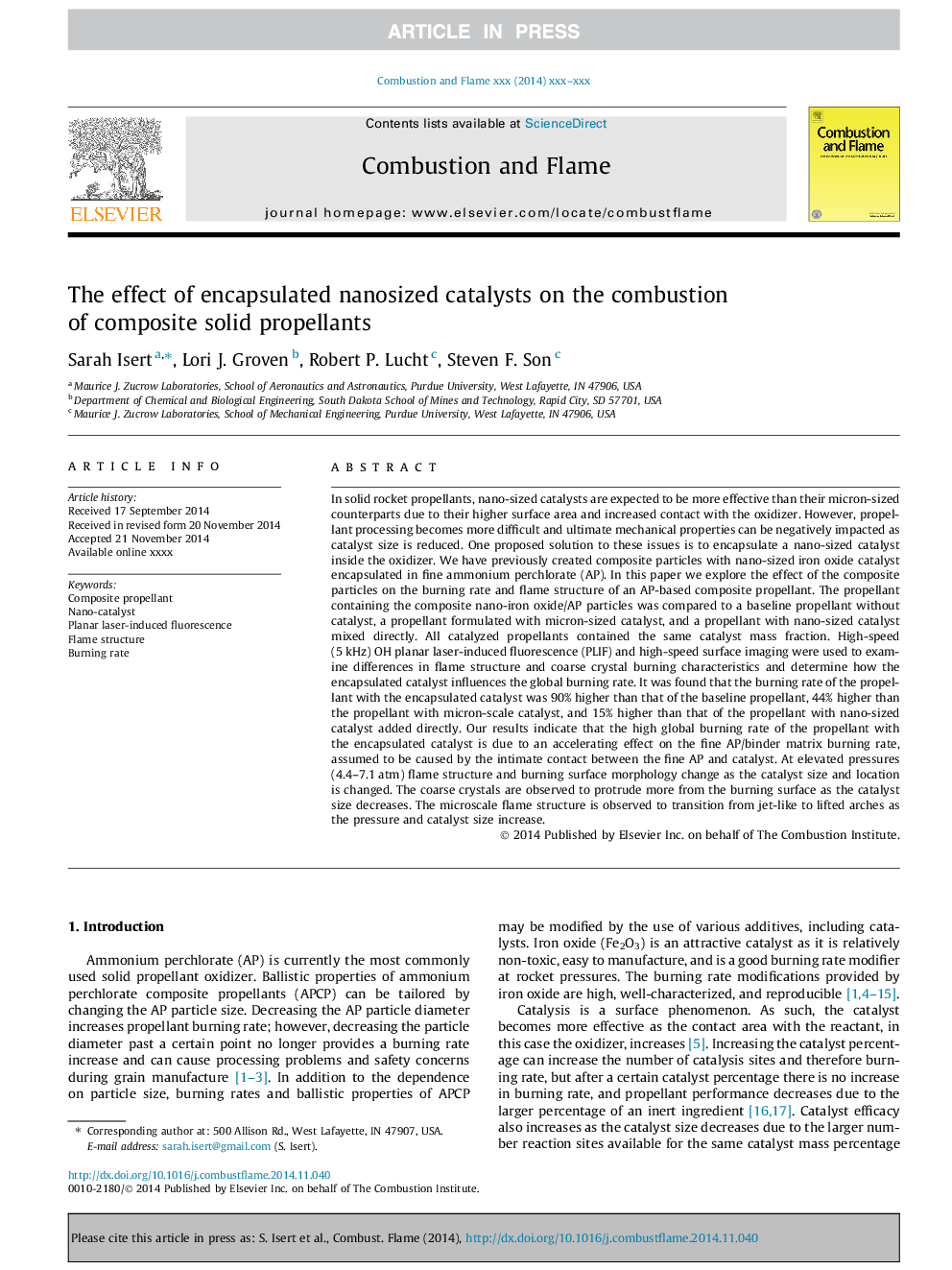| کد مقاله | کد نشریه | سال انتشار | مقاله انگلیسی | نسخه تمام متن |
|---|---|---|---|---|
| 10264287 | 457756 | 2015 | 8 صفحه PDF | دانلود رایگان |
عنوان انگلیسی مقاله ISI
The effect of encapsulated nanosized catalysts on the combustion of composite solid propellants
ترجمه فارسی عنوان
اثر کاتالیزورهای نانوساختار کپسول شده بر احتراق سوخت جامد کامپوزیت
دانلود مقاله + سفارش ترجمه
دانلود مقاله ISI انگلیسی
رایگان برای ایرانیان
کلمات کلیدی
موشک کامپوزیت، نانو کاتالیزور، فلورسانس ناشی از لیزر فلورسانس، ساختار شعله، سرعت سوزاندن،
موضوعات مرتبط
مهندسی و علوم پایه
مهندسی شیمی
مهندسی شیمی (عمومی)
چکیده انگلیسی
In solid rocket propellants, nano-sized catalysts are expected to be more effective than their micron-sized counterparts due to their higher surface area and increased contact with the oxidizer. However, propellant processing becomes more difficult and ultimate mechanical properties can be negatively impacted as catalyst size is reduced. One proposed solution to these issues is to encapsulate a nano-sized catalyst inside the oxidizer. We have previously created composite particles with nano-sized iron oxide catalyst encapsulated in fine ammonium perchlorate (AP). In this paper we explore the effect of the composite particles on the burning rate and flame structure of an AP-based composite propellant. The propellant containing the composite nano-iron oxide/AP particles was compared to a baseline propellant without catalyst, a propellant formulated with micron-sized catalyst, and a propellant with nano-sized catalyst mixed directly. All catalyzed propellants contained the same catalyst mass fraction. High-speed (5Â kHz) OH planar laser-induced fluorescence (PLIF) and high-speed surface imaging were used to examine differences in flame structure and coarse crystal burning characteristics and determine how the encapsulated catalyst influences the global burning rate. It was found that the burning rate of the propellant with the encapsulated catalyst was 90% higher than that of the baseline propellant, 44% higher than the propellant with micron-scale catalyst, and 15% higher than that of the propellant with nano-sized catalyst added directly. Our results indicate that the high global burning rate of the propellant with the encapsulated catalyst is due to an accelerating effect on the fine AP/binder matrix burning rate, assumed to be caused by the intimate contact between the fine AP and catalyst. At elevated pressures (4.4-7.1Â atm) flame structure and burning surface morphology change as the catalyst size and location is changed. The coarse crystals are observed to protrude more from the burning surface as the catalyst size decreases. The microscale flame structure is observed to transition from jet-like to lifted arches as the pressure and catalyst size increase.
ناشر
Database: Elsevier - ScienceDirect (ساینس دایرکت)
Journal: Combustion and Flame - Volume 162, Issue 5, May 2015, Pages 1821-1828
Journal: Combustion and Flame - Volume 162, Issue 5, May 2015, Pages 1821-1828
نویسندگان
Sarah Isert, Lori J. Groven, Robert P. Lucht, Steven F. Son,
